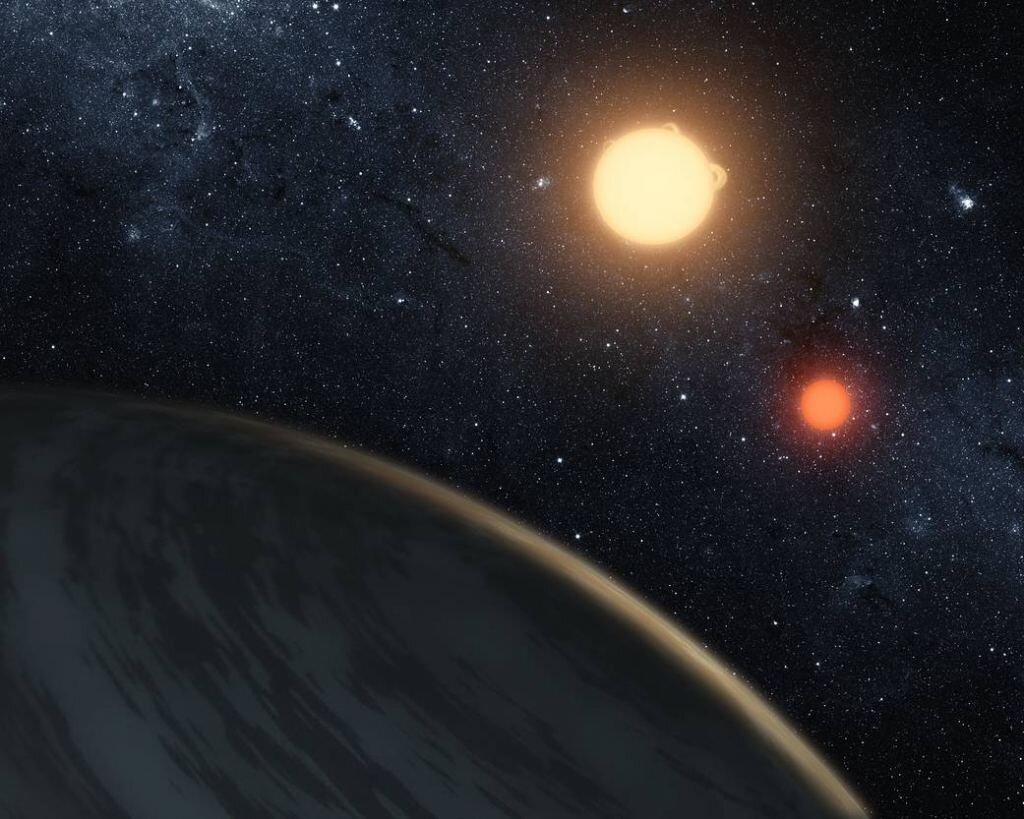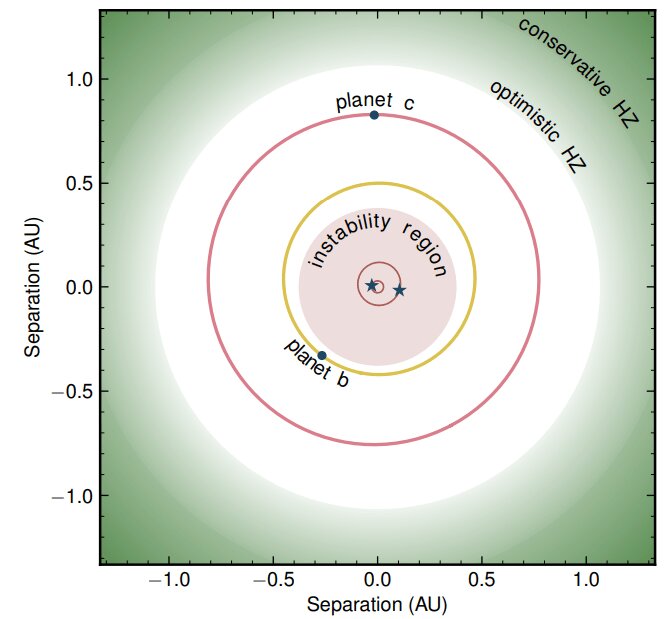A planet orbiting the binary star TOI-1338 was found. This is the second body discovered in this system. Multi-planetary systems are found in binary stars quite infrequently.

Second planet of the double star
Astronomers have found a planet that orbits two stars and named it TOI-1338/BEBOP-1c. Such a complicated name is due to the fact that the discovery is made within the framework of the Binaries Escorted By Orbiting Planets (BEBOP) program, aimed directly at searching for planets in binary systems.
The planet is a gas giant about 65 times more massive than Earth. It flies around a couple of stars in 215 Earth days. It was discovered using data on radial velocities collected by HARPS and ESPRESSO spectrographs.
But the most interesting thing is why TOI-1338 is present in the name of the planet. This name was given to this star when another planet was found near it in 2017. Therefore, the current one is already the second one found in its possession. Then scientists discovered a gas giant that had a mass 33 times larger than Earth. That is, it is a cross between Neptune and Saturn.
First planet of the system
The gas giant TOI-1338 b 2017 was opened by the transit method. This means that astronomers have seen how it darkens the light of the stars around which it orbits. But this method is quite unreliable.
The fact is that the TOI-1338 b pair consists of a star with a mass 12 percent larger than the sun and a red dwarf having about a third of the weight of our luminary. They themselves eclipse each other, so it is not always possible to observe the planet.

In addition, the orbit of TOI-1338 b is unstable. Its angle relative to our point of view is constantly changing. It is expected that in 2023 its transits will stop and we will be able to see them again only in 8 years, that is, in 2023.
Are planets really very rare in binary systems?
The discovery in the TOI-1338 system interests scientists mainly because it is a fairly rare event. However, it is not entirely true to say that planets in binary stars are infrequent. They are divided into two types:
S — orbiting only one star out of a pair that is usually wide enough;
P — orbiting two stars of a close pair.
S-planets are not so rare in the Universe. Quite a lot of them are known even near the Sun. But only 12 P-planets are known to date. And only two of them are in multi-planetary systems. Scientists are still arguing about whether there really are so few of them, or whether we simply don’t see them.
It is quite possible that both factors play a role. On the one hand, stellar components often eclipse each other, so it is much more difficult to catch the transit of the planet against their variable background. In addition, in the early stages of the evolution of the system, the movement of stars should strongly disrupt the protoplanetary disk. So, it is quite possible that planets do form extremely rarely in such systems.
According to phys.org
Follow us on Twitter to get the most interesting space news in time
https://twitter.com/ust_magazine

